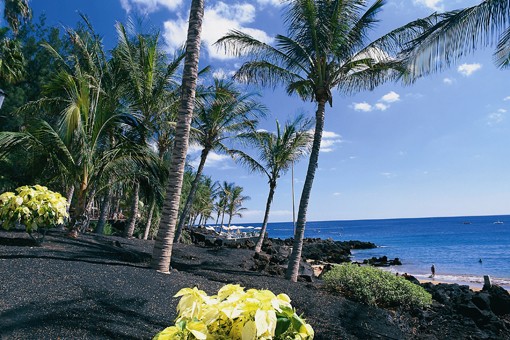 Holidays in the Canary Islands are all about choices. Choose between green wilderness and arid volcanic landscapes, rural hideaways and non-stop beach resorts, all-night dancing and family entertainment. Book a Canary Islands hotel on the island that’s perfect for you.
Holidays in the Canary Islands are all about choices. Choose between green wilderness and arid volcanic landscapes, rural hideaways and non-stop beach resorts, all-night dancing and family entertainment. Book a Canary Islands hotel on the island that’s perfect for you.Spain’s seven Canary Islands rise out of the Atlantic off the west coast of Africa, 1,500km from mainland Europe. The differences between the islands are a constant surprise. Lively beach resorts and unspoiled interior regions draw holidaymakers all year round to the largest islands of Tenerife and Gran Canaria. Volcanic Lanzarote is the driest island and nearest to Africa. Outdoor activities and the simple life are the attraction of sandy Fuerteventura and green, tranquil La Palma, the most westerly.
The largest of the Canary Islands is green and cultivated in the hilly north. Farms, vineyards, gardens and Spanish colonial towns are scattered throughout. In the capital, Santa Cruz, there’s fine art and culture. The west coast resort Puerto de la Cruz has family attractions like Loro Parque zoo. Southern Tenerife enjoys warm sunshine year-round and has the widest choice of Canary Island hotels. Its beach resorts range from lively Playa de las Americas to stylish Costa Adeje. Dominating the island, majestic snow-tipped El Teide is Spain’s highest mountain. For a complete contrast, take an excursion to see primaeval Canarian forest on the little neighbour of La Gomera.
All the diversity of holidays in Canary Islands is found in Gran Canaria. Sun, sea and sand dunes attract visitors to vibrant south coast resorts Playa del Inglés, Maspalomas and charming Puerto de Mogán marina. In the island’s centre, a wild mountain landscape rises from dense pine forest and fertile valleys. In the north enjoy pretty unspoilt villages like Teror and diverse plantlife from cacti to palm forest in the Jardín Botánico Canario. Museums and culture are concentrated in the Canary Islands’ largest city, Las Palmas de Gran Canaria.
Pristine white villages among dark, twisted volcanic rocks, all under dazzling blue skies, give the most easterly of the Canary Islands dramatic visual appeal. The red-crested volcano Timanfaya dominates western Lanzarote. A nightclub in a cave is just one of a string of imaginative attractions created by artist Cesar Manrique. Vineyards growing in the volcanic wastes produce surprisingly elegant white wines. Small resorts with pale sandy beaches – sporty Costa Teguise, sandy Playa Blanca and family-favourite Puerto del Carmen – run along the south coast.
The big island of Fuerteventura has long sandy beaches and some of the best-value Canary Island hotels. This is the place for windsurfing and watersports. At the other end of the archipelago, little El Hierro and mountainous La Palma ripple with the dramatic petrified lava shapes of volcanic eruptions. With a wetter climate, they’re the greenest islands and are traced with paths through dense laurel woodland. For more sunshine, stay on their south-west shores.